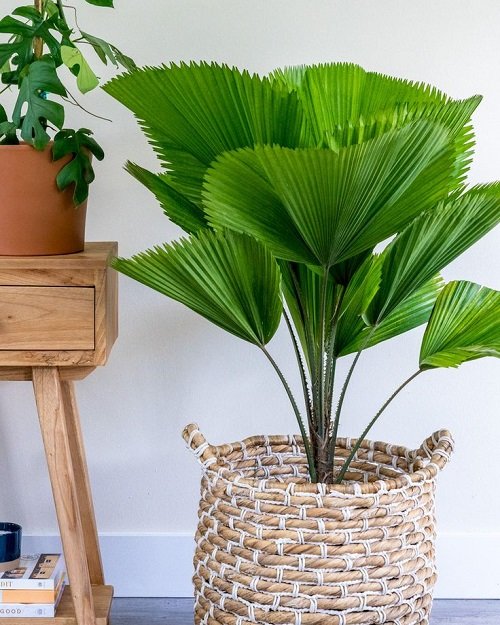Licuala Grandis is a tropical beauty with large, fan-like leaves! Here’s everything you need to know to keep it thriving all year round!
Licuala Grandis – a plant that stands out with its large, fan-shaped leaves and can make it an eye-catcher in any room! A spectacular example for anyone looking for a “forest atmosphere” at home.
Information about Licuala Grandis
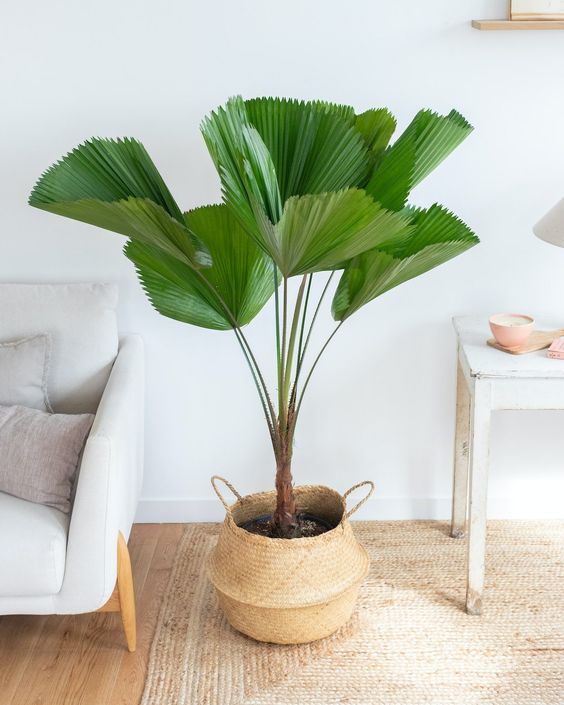
Licuala grandis, commonly known as the curling fan palm, is native to the rainforests of the Solomon Islands and Vanuatu in the South Pacific. The foliage is large, shiny and almost circular, which contributes to its unique and attractive appearance.
Each leaf can reach up to 15 to 20 inches in diameter and have a fan-like configuration, earning it the name “Ruffled Fan Palm.”
Indoors, the plant can reach a height of 4 to 6 feet, although it can grow taller under optimal conditions.
Propagating Ruffled Fan Palm Indoors
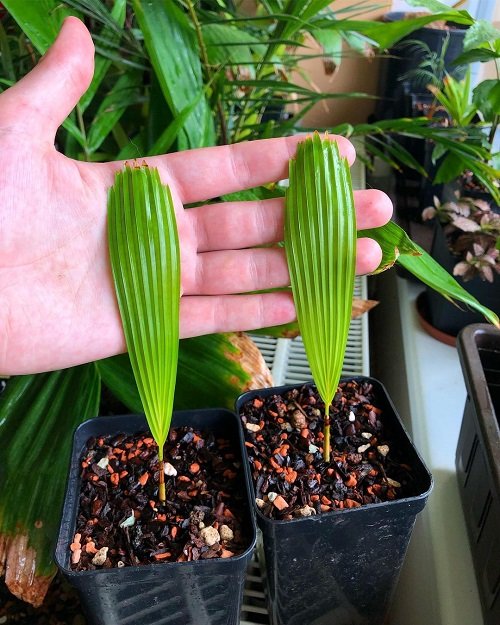
The best way to propagate this plant is through seeds. Obtain fresh specimens from a reliable source and soak them in warm water for 24-48 hours. This helps soften the seed coat and promote germination.
Now fill a pot with a combination of peat moss, perlite and vermiculite, or you can use any good quality seed starting mix. Plant the seeds shallowly, about 1/2 inch deep, and water them with a spray bottle. Place the pot in a location where it receives indirect light and cover it with a plastic bag.
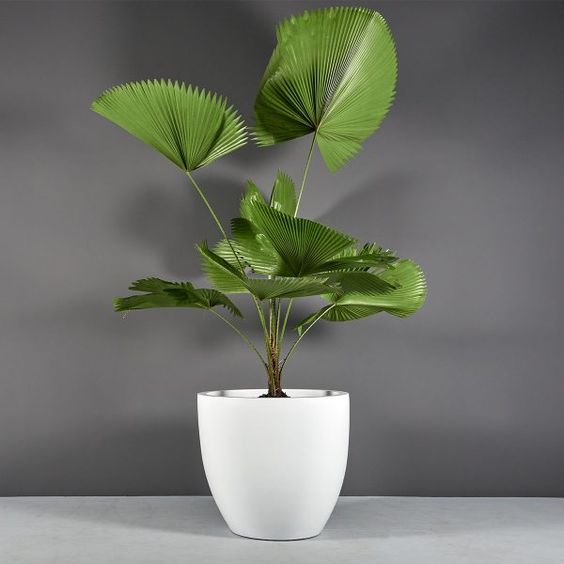
The seeds germinate in 3-5 weeks.
Best Pot Size for Licuala Grandis Indoor
Start with a 6- to 8-inch diameter pot for young plants. Depending on growth and spread, repot every 2-4 years into a pot that is 1-2 sizes larger. This should be done in spring or early summer when the palm tree is still growing.
Requirements for Growing Licuala Grandis Indoors
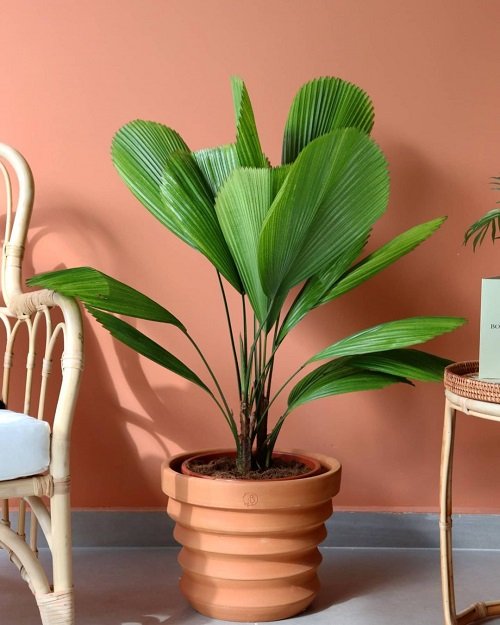
sunlight
Due to the large surface area of the leaves, Licuala Grandis can be easily damaged by prolonged exposure to direct sunlight, as this can cause the leaves to burn, causing them to turn brown and lose their lush appearance.
It is ideal to place the plant near an east or north window where it will receive gentle morning sunlight.
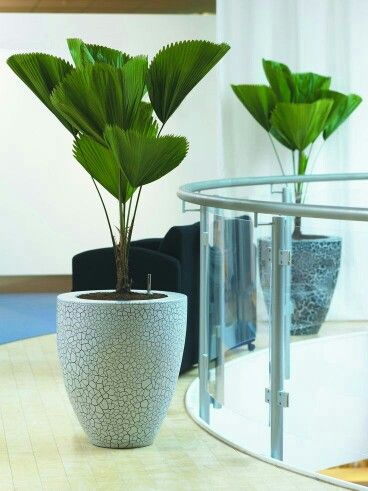
Floor
Avoid using 100% garden soil if you are looking forward to large, shiny leaves. Go for:
Peat moss or coconut coir (50%): Helps retain moisture without causing waterlogging.
Perlite or pumice (30%): These inorganic components improve aeration and drainage.
Composted bark or leaf mold (20%): Adds organic matter and nutrients to the soil. You can also add some manure.
irrigation
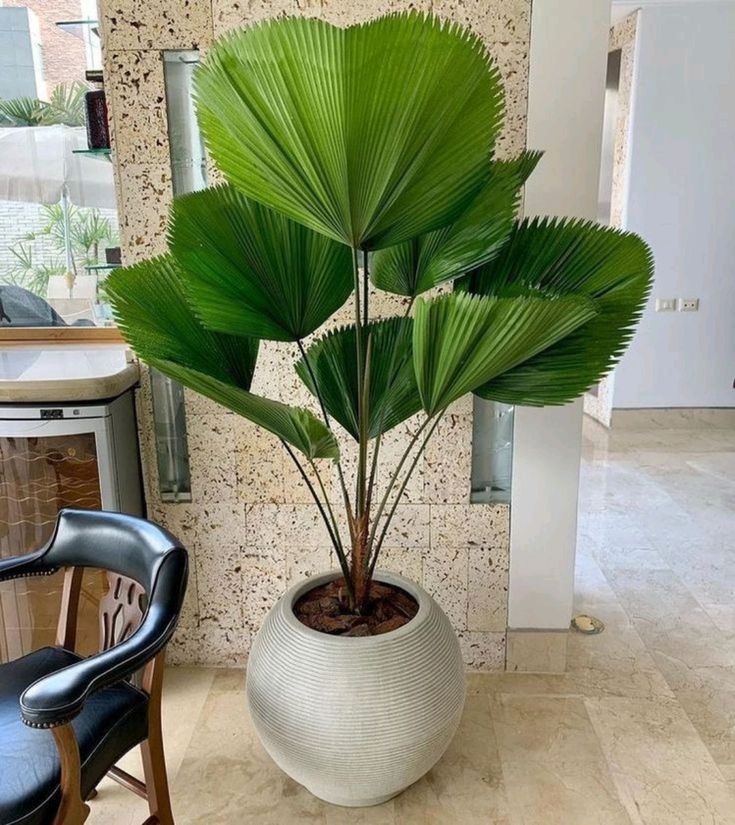
Before watering, check that the soil is shallow. If it feels dry, it’s time to moisten the growing medium. Remember that it is always better to underwater than overwater Licuala Grandis as this can cause root rot.
Pro tip: Use room temperature water. If tap water is hard or contains chemicals such as chlorine, you should use filtered water or rainwater to avoid burns on the tips of the leaves.
Temperature and humidity
The best temperature window for Licuala Grandis is 15°C to 28°C or 58°F to 82°F. Temperatures below 10°C (50°F) or above 30°C (86°F) can stress the plant and result in poor growth or damage.
Also, keep it away from cold drafts and sudden temperature changes as it is sensitive to cold.
Licuala Grandis Indoors Care
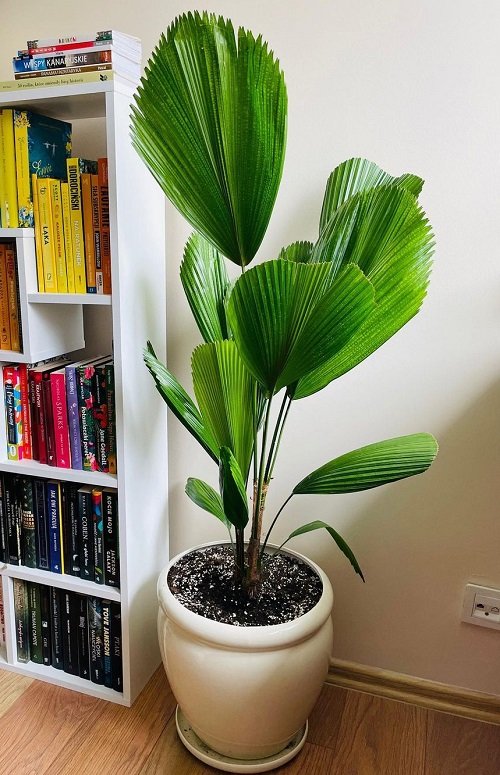
Fertilize
Feed the plant every 3-4 weeks with a balanced liquid fertilizer after diluting it to 1/4 of its strength. It gives it the right boost without damaging the roots.
In the cold months the plant must not be fed.
Clean the leaves
Over time, a layer of dirt, dust, and other particles can accumulate on the large leaves of Licuala Grandis. Gently wipe the leaves with a damp cotton cloth from time to time to keep them clean and shiny – this also helps the leaves appear more vibrant.
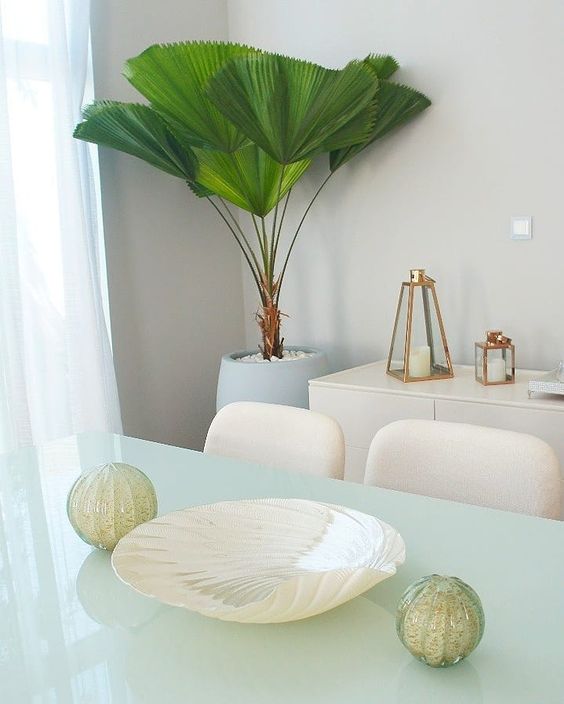
Cleaning the leaves ensures maximum light absorption, which is crucial for photosynthesis.
Common Pests and Diseases
If you have Licuala grandis, you should know that it can be infested with spider mites, mealybugs and other pests even indoors. Check the top and bottom of the leaves regularly for signs of pests such as cobwebs, spots, or small beetles.
Don’t wait if you find some. Take a mild insecticide like neem oil to eliminate the insects and keep your palm healthy.
 careyfashion.com Carey Fashion
careyfashion.com Carey Fashion
